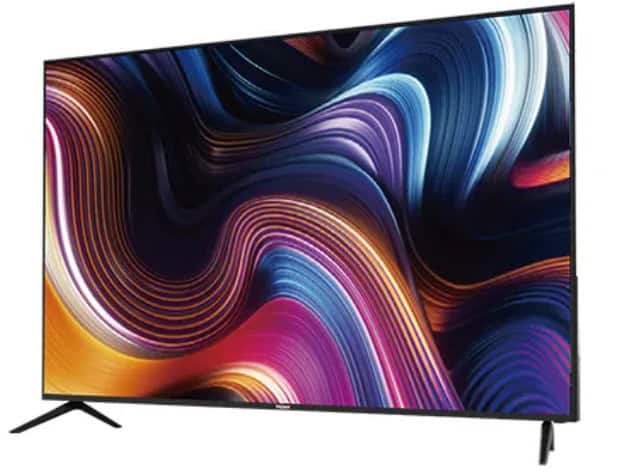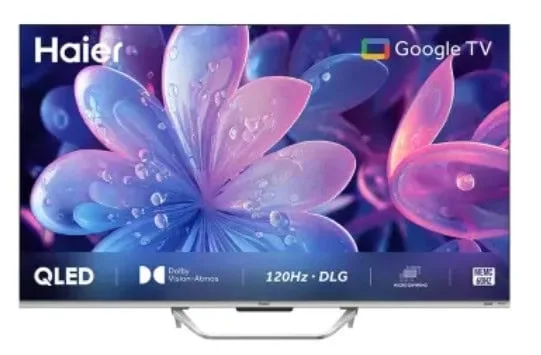OLED vs LED TV: The Difference Explained in 2024
When it comes to choosing a new TV, the decision often boils down to two major display technologies—OLED (Organic Light-Emitting Diode) and LED (Light-Emitting Diode). Both have significantly transformed the way we experience visual content on our screens, but they offer distinct advantages suited to different viewing preferences.
While OLED is celebrated for its deep blacks and vibrant colors, LED is known for its energy efficiency and versatile performance. In this comprehensive guide, we break down the key differences between OLED and LED TVs to help you make an informed decision.
OLED VS LED TV: Difference between the display technologies explained

OLED vs LED TV: Image Quality
One of the standout features of OLED TVs is their ability to deliver unparalleled image quality, particularly when it comes to contrast and black levels. Each pixel in an OLED screen emits its own light, allowing for infinite contrast ratios and true blacks, which enhances the depth and realism of the picture. This makes OLED the top choice for dark rooms and cinematic experiences. Haier’s 65C8000U OLED TV, for example, showcases the brilliance of OLED technology with self-lighting pixels that create deep blacks and vibrant colors.
On the other hand, LED TVs are known for their bright and clear displays, making them ideal for well-lit rooms or outdoor settings. LED screens use a backlighting system to illuminate the entire display, providing uniform brightness. For instance, Haier’s LE55K6600GA LED TV delivers impressive brightness, making it perfect for environments with a lot of ambient light. However, LED TVs may not match the intense contrast and depth offered by OLEDs, as some light leakage can occur.
OLED vs LED TV: Durability and Longevity
OLED TVs use organic materials that emit light when powered, but these materials can degrade over time, leading to potential “burn-in” or image retention with static images. To counteract this, manufacturers have introduced technologies like pixel shifting to reduce the risk of burn-in. LED TVs, on the other hand, are generally more durable due to their inorganic components and solid construction, making them more impact-resistant.
When it comes to lifespan, LED TVs often outlast their OLED counterparts. LED backlighting can last over 50,000 hours, providing long-term reliability, whereas OLED screens, while offering superior image quality, may experience a decline in performance due to their organic components.

OLED vs LED TV: Power Consumption
If energy efficiency is a priority, OLED TVs have the upper hand. OLED screens can individually turn off pixels when displaying black content, which conserves power and leads to lower overall energy consumption. This makes OLED displays highly efficient, especially when watching darker scenes or content.
In contrast, LED TVs require constant backlighting, which results in higher power usage. While LED technology has improved in energy efficiency over time, OLED still takes the lead in this category due to its ability to completely shut off pixels and save energy when displaying dark images.
OLED vs LED TV: Pricing
Pricing is a major factor for many buyers, and OLED TVs generally come with a higher price tag due to their advanced technology and complex manufacturing processes. The use of organic materials and the lower production yields contribute to this higher cost. LED TVs, being more established and easier to produce at scale, tend to be more affordable, making them a budget-friendly option for many households.
Brands like Haier offer a range of both OLED and LED models, catering to different price points and preferences. Whether you’re after the premium performance of the Haier C11 OLED or the affordability of an LED model, Haier provides options that balance both cost and quality.
Conclusion: Which is Right for You?
When choosing between OLED and LED, consider your viewing habits, environment, and budget. If you prioritize stunning visuals, deep blacks, and energy efficiency, OLED is the way to go. However, if durability, brightness, and affordability are more important, an LED TV might be the better choice. Brands like Haier offer excellent options in both categories, ensuring that whether you choose OLED or LED, you’ll enjoy a superior viewing experience.








